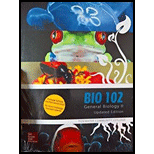
BIO 102 General Biology II Updated Edition (Tidewater Community College)
3rd Edition
ISBN: 9781259614064
Author: Tidewater Community College
Publisher: MCG CUSTOM
expand_more
expand_more
format_list_bulleted
Concept explainers
Question
Chapter 17, Problem 12WIO
Summary Introduction
To explain:
How the treatment of stomach ulcers have changed since the discovery of its causal agent Helicobacter pylori.
Concept introduction:
Antibiotics are chemical agents used to kill or thwart the growth of bacteria. They do so by inhibiting the cell wall formation or disturb the plasma membrane of the bacteria. This makes the bacteria vulnerable and they die.
Expert Solution & Answer
Want to see the full answer?
Check out a sample textbook solution
Students have asked these similar questions
What are functions of cuboidal cells in the kidney? Select all that apply.
Concentration of gases
Dilution of chemicals
Secretion of molecules
Nutrition to tissues
Support of tissues
Absorption of molecules
question1 In plants, epithelial tissue is only found as the outermost cell layer and acts as a barrier. In humans, epithelial tissue is found inside the body as well as on the surface.
What function(s) does/do epithelial tissue carry out in humans? Select all that apply.
Waste storage
Filtration
Oxygen transport
Protection
Diffusion
Osmosis
Absorption
What words best describes this organism?
a. Unicellular/nonmotile
Ob. unicellular/motile
c. colonial/nonmotile
d. colonial/motile
e. multicelluar
O f. siphonous
g. none of these
Chapter 17 Solutions
BIO 102 General Biology II Updated Edition (Tidewater Community College)
Ch. 17.1 - What are two domains that contain prokaryotes?Ch. 17.1 - Prob. 2MCCh. 17.1 - Prob. 3MCCh. 17.1 - Why are most species of prokaryotes little...Ch. 17.2 - Prob. 1MCCh. 17.2 - Prob. 2MCCh. 17.2 - What does the Gram stain reveal about a cell?Ch. 17.2 - Prob. 4MCCh. 17.2 - Prob. 5MCCh. 17.2 - How are molecular data changing microbial...
Ch. 17.2 - Prob. 7MCCh. 17.3 - Prob. 1MCCh. 17.3 - Prob. 2MCCh. 17.3 - Prob. 3MCCh. 17.4 - Prob. 1MCCh. 17.4 - Prob. 2MCCh. 17.4 - What adaptations enable pathogenic bacteria to...Ch. 17.4 - What are some practical uses of bacteria and...Ch. 17.5 - Prob. 1MCCh. 17.5 - Prob. 2MCCh. 17 - A prokaryotic cell is one that a. lacks DNA. b....Ch. 17 - Which of these is a distinguishing characteristic...Ch. 17 - What feature distinguishes the cell walls of...Ch. 17 - What type of organism may use inorganic chemicals...Ch. 17 - Prob. 5MCQCh. 17 - Prob. 6MCQCh. 17 - Prob. 7MCQCh. 17 - Prob. 8MCQCh. 17 - Explain why the antibiotics penicillin and...Ch. 17 - Why do some microbiologists disagree with...Ch. 17 - Give five examples that illustrate how bacteria...Ch. 17 - If you were developing a new "broad-spectrum"...Ch. 17 - Describe your own metabolic classification: Are...Ch. 17 - Prob. 6WIOCh. 17 - Ernst Mayr defined a biological species as a...Ch. 17 - Why did the discovery of archaea generate interest...Ch. 17 - Prob. 9WIOCh. 17 - Prob. 10WIOCh. 17 - Ecosystems rely on nitrogen -fixing bacteria,...Ch. 17 - Prob. 12WIOCh. 17 - Prob. 13WIOCh. 17 - Prob. 14WIOCh. 17 - Prob. 15WIOCh. 17 - Mycobacterium tuberculosis causes most cases of...Ch. 17 - Add autotrophs, heterotrophs, phototrophs, and...Ch. 17 - Prob. 2PITCh. 17 - Prob. 3PITCh. 17 - Prob. 4PITCh. 17 - Prob. 6PIT
Knowledge Booster
Learn more about
Need a deep-dive on the concept behind this application? Look no further. Learn more about this topic, biology and related others by exploring similar questions and additional content below.Similar questions
- Identify the phylum or class. a. Euglenophyta b. Dinoflagellata c. Bacillariophyceae d. Oomycetes e. Phaeophyceae O f. Myxomycota g. Xanthophyceae ○ h. Chrysophyceae i. Dictyosteliomycota O j. Rhodophyta Ok. Chlorophyceaens I. Charophyceaensarrow_forwardWhat is produced inside the indicated structure (Fucus). a. eggs O b. antheridia ○ c. sperm d. zygotes e. none of thesearrow_forwardGreen Algae, as a group, is actually paraphyletic with one subgroup more closely related to higher plants than the other. Which of the following green algae groups is more closely related to higher plants: a. Charophyceans b. Chlorophyceans c. Rhodophyta d. Xanthophyceansarrow_forward
- A single-celled green algal genus that is motile with 2 flagella, has a cup shaped chloroplast, and an eyespot: a. Volvox b. Chlamydomonas c. Euglena d. Codiumarrow_forwardA[n] ___ is produced by members of the Myxomycota when there is a lack of moisture. a. plasmodiocarp b. aethalium c. sclerotium d. plasmodiumarrow_forwardWhich of the following is not true about the life-cycle of Fucus. a. 8 eggs per oogonium b. 64 sperm per antheridium c. eggs are flagellated d. sperm are flagellatedarrow_forward
- Green Algae, as a group, is actually paraphyletic with one subgroup more closely related to higher plants than the other. Which of the following green algae groups is more closely related to higher plants: a. Charophyceans b. Chlorophyceans c. Rhodophyta d. Xanthophyceansarrow_forwardCertain toxic terpenoids in this group is thought to deter herbivory but may also have some anti-tumor activity? a. green algae b. brown algae c. red algae d. golden algae e. none of thesearrow_forwardIn the cellular slime molds, the most common phase is: a. plasmodium b. pseudoplasmodial c. single cells as myxamoebae d. moundingarrow_forward
- Which of the following descriptive terms does not describe Hydrodictyon? a. colonial b. nonmotile c. 1 large reticulated chloroplast in each cell d. all of these describe Hydrodictyonarrow_forwardWhich of the following does not apply to Chara? a. "stoneworts" b. isogamous c. calcified walls d. apical growth with an axis and branchesarrow_forwardtell us about one time when you went the extra mile when it would be acceptable to perform the bare minimum. why did you exert the extra effort and what was the outcome?arrow_forward
arrow_back_ios
SEE MORE QUESTIONS
arrow_forward_ios
Recommended textbooks for you
- Essentials of Pharmacology for Health ProfessionsNursingISBN:9781305441620Author:WOODROWPublisher:Cengage
- Health Safety And Nutrition F/Young ChildHealth & NutritionISBN:9781305144767Author:MAROTZPublisher:Cengage


Essentials of Pharmacology for Health Professions
Nursing
ISBN:9781305441620
Author:WOODROW
Publisher:Cengage


Health Safety And Nutrition F/Young Child
Health & Nutrition
ISBN:9781305144767
Author:MAROTZ
Publisher:Cengage

